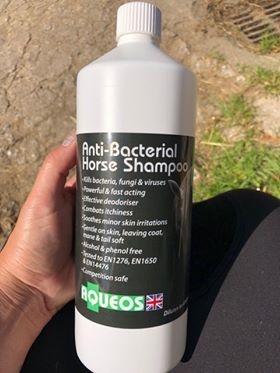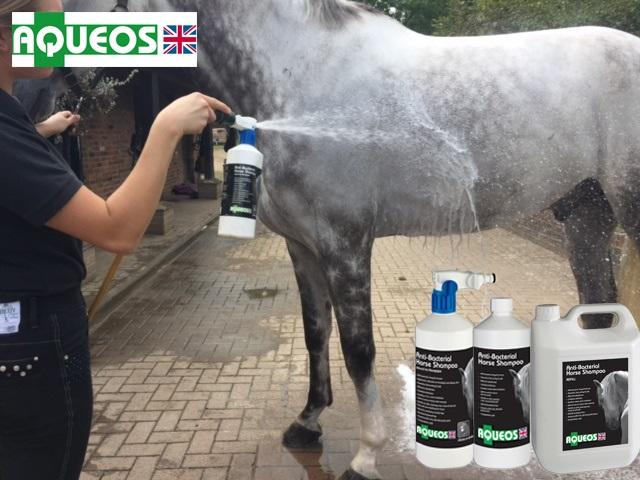Skin disease in any animal is highly emotive for owners, as it is a condition which is visible all the time – a constant reminder that your animal has a problem. Allergies can be incredibly frustrating for horse owners to manage, at best irritating for the horse, and at worst may even be debilitating and limit a horse or pony’s performance potential.
It can be difficult to identify exactly what a horse or pony is reacting to in their environment which therefore makes prevention difficult. Examples of allergens which could result in allergic skin disease in horses include mites, flies, midges, various grasses, tree pollen, cereals, and poultry – please note this is not an exhaustive list!
Contact reactions and drug reactions in horses are rare, but do occasionally happen. Examples include reactions to particular bedding types, plants, topical products, ointments, creams, or fly sprays.

HOW CAN I TELL IF MY HORSE OR PONY IS SUFFERING FROM ALLERGIC SKIN DISEASE?
Classic signs of allergic skin disease include hives (allergic bumps – similar to those which would appear if you were stung by a nettle), itchiness (more correctly referred to as pruritus), hair loss (alopecia) and thickening of the skin (lichenification).
Discharge or oozing from the skin lesions is also possible, and may be due to secondary bacterial infection, especially if the horse or pony has repeatedly traumatised the skin due to the irritation. Secondary bacterial infection is also more likely if the horse or pony is already immunocompromised, for example if they suffer from Cushings disease. Most allergies will become apparent when a horse is four to five years old, however in some horses and ponies the signs appear earlier than this. Occasionally, an allergy will not be diagnosed until much later in life. Often it can be useful as an owner to keep a diary of reactions or flare-ups, to help identify any pattern to the allergy.
SWEET ITCH – A COMMON ALLERGIC REACTION
The most common example of allergic skin disease in horses and ponies is sweet itch, also known as Culicoides hypersensitivity. Culicoides is a species of midge fly, and it is the midge’s saliva which horses and ponies suffering from sweet itch react to when they are bitten.
The condition is largely limited to the spring and summer months when midges are active; this can be a useful tool when trying to diagnose what a horse or pony is allergic to – if their allergic skin problem is year-round, it is much less likely to be due to Culicoides hypersensitivity.
Certain breeds appear to be predisposed to sweet itch, including Shetland ponies, Welsh ponies, Shire horses and Icelandic ponies. It is advised not to breed from any horse or pony suffering from sweet itch, due to the potential for their offspring to inherit the same problem.
Signs of sweet itch include:
- Rubbing the mane – this results in broken mane hairs and sometimes gives the horse or pony a hogged mane appearance
- If the condition is chronic, folds may develop in the skin on the sides of the neck and in the base of the mane due to excessive rubbing – these are called rugal folds and are a tell-tale sign of sweet itch.
- Rubbing the tail – initially the top of the tail may look like a toilet brush, but this can progress to a rat-tail appearance if all the hair is rubbed out.
- Rubbing the belly – affected horses or ponies often dog-sit to scratch their belly on the ground.
- Rubbing the head – this can result in bald areas, particularly around the ears, forehead and sides of the face.
INVESTIGATIONS TO REACH A DIAGNOSIS OF ALLERGIC SKIN DISEASE
As mentioned above, keeping a diary of the episodes of itching can help to identify a pattern to the allergy, for example, if the problem is seasonal.
You will also work closely with your vet, who may try:
- Skin scrapes, hair plucks or coat brushings can be carried out to eliminate parasitic causes of a skin reaction/allergy.
- Skin biopsies can confirm whether there is an allergic reaction present in the skin – however, this is non-specific and will not tell you what the horse or pony has reacted to.
- Allergy testing – generally intra-dermal skin testing is more reliable than blood testing to identify the problem allergens in horses or ponies.
- A food exclusion trial may be helpful if your vet is suspicious that your horse is reacting to something he or she is eating.
It may also be necessary to rule out ringworm infection. Although ringworm is usually non-pruritic, i.e. doesn’t cause itchiness, in a small number of cases it does cause horses to itch. If ringworm is diagnosed it requires a considerably different management approach to allergic skin disease. Luckily, if managed correctly, it is typically a shorter-lived problem, rarely with long-lasting effects.
TREATMENT AND PREVENTION OF ALLERGIC SKIN DISEASE
Prevention is always better than cure when it comes to allergies, and avoidance of the allergen which your horse or pony is reacting to is absolutely key.
Sweet itch prevention:
- Avoid turnout at dawn and dusk when midges and other insects are most active.
- Regular use of a fly repellent is recommended – ideally containing cypermethrin (e.g. Deosect, which can be applied fortnightly) or permethrin (e.g. Z-itch/Switch, which can be applied weekly).
- Avoid turnout near trees or standing water where midges tend to gather.
- If midges are present in the stable, consider installing a ceiling-mounted fan.
- Benzylbenzoate – this should not be used on broken skin, but can be a useful midge repellent in the form of a soothing lotion for milder cases.
- Using a wrap-around fly rug and fly mask at all times during the midge season is essential – some insurance companies will cover the cost of fly rugs if an owner has a claim open for investigation and treatment of a skin allergy – it is worth having several rugs so that they can be washed regularly, and then the horse is never left without a rug on.
Medical treatment with systemic (oral or injectable) or topical steroids may be necessary in the worst cases, and your pony may also require treatment of any secondary bacterial infections with antibiotics. Antihistamines are generally very safe in equine patients, but are much less effective than in humans and dogs, hence why they are often not a solution for horses or pony suffering from allergic skin disease. Soothing shampoos to soothe the skin, reduce itching and improve coat condition can be helpful in some cases.

Immunotherapy can be used for sweet itch and other skin allergies. If intra-dermal skin testing has been performed to identify the exact allergens causing a horse to have allergic reactions, individual immunotherapy can be created to administer to the horse. Immunotherapy works by repeatedly giving very small doses of the allergens causing the reaction, each time stimulating an immune response in the body, and ultimately resulting in tolerance to those particular allergens.
CONCLUSION
Horses can be allergic to a number of things, which can make diagnosis difficult. It’s important to work together with your vet to diagnose and treat an allergy in your horse.
For More Detail Visit Now: Anti Itch Horse Shampoo

Ruth is all about pet style. She’ll help you and your furry friend turn heads with the latest trends in pet fashion.





